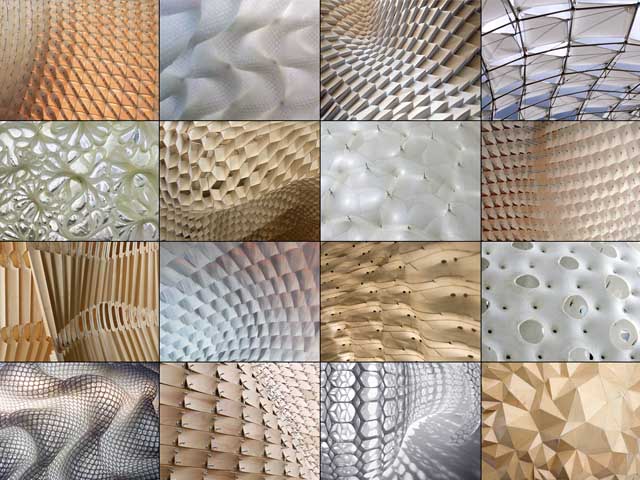Architecture as a material practice is predominately based on an approach to design that is characterised by prioritising the elaboration of form over its subsequent materialisation. Since the Renaissance the increasing division between processes of design and making has led to the age-long development and increasing dependence on representational tools intended for explicit, scalar geometric descriptions that at the same time serve as instructions for the translation from drawing to building. Inevitably, and with few exceptions, even in today’s digital practice architects embrace design methods that epitomize the hierarchical separation of form definition and materialisation.
The research of Achim Menges explores an alternative, morphogenetic approach to design that unfolds morphological complexity and performative capacity from material constituents without differentiating between formation and materialisation processes. This requires an understanding of form, material, structure and environment not as separate aspects, but rather as complex interrelations that are embedded in and explored through integral computational processes.
The notion of material system constitutes one central aspect of this research. Material system does not only refer to the material constituents of a building alone, but rather describes, in a system-theoretical sense, the complex reciprocity between materiality, form, structure and space, the related processes of production and assembly, and the multitude of performative effects that emanate from the interaction with environmental influences and forces. This conceptualization of material systems enables the utilization of computational design processes. The ability of computation to simultaneously do both, stochastically derive and systemically process complex datasets within a defined or evolving constraint space, can be utilized to explore a material system’s performative capacity within its materially determined limits. Furthermore, continuously informing the form generation with different modes of computational analysis enables a direct link between the ontogeny, the history of structural changes of an individual, and its interaction with external forces and energy respectively, that is its ecological embedding. This enables to conceive of material systems as the synergetic outcome of calibrating and balancing multiple influencing variables and divergent design criteria, which always already include the interaction with the system-external environment. The resultant environmental modulations can now be understood as highly specific patterns in direct relation to the material interventions from which they originate.
The design of space, structure and climate can be synthesized in integrative computational design processes.

